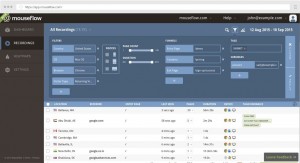Account Based Everything is a huge topic these days. Everyone is account focused, they want to grow their relationships, increase penetration and grow revenue.
Developing our accounts is a huge opportunity. There’s huge amounts of data outlining the differences in sales time and cost between growing an existing relationship and acquiring net new logos. Growing our existing accounts is a hands down winner!
Intuitively, it makes sense to leverage our current accounts. We know them, they know us. We can leverage our existing position to grow the relationship. We have a bit of an “insider” or incumbency advantage with these accounts.
To defend our position in these accounts, some even adopt a strategy, “Make the pain of change far greater than the pain of staying the same (with the incumbent.” A 180 degree reversal of what we try to do with new logos.
Of course, there’ are other perspectives–“familiarity breeds contempt,” or “the grass is greener…” (Which both we and people in the accounts we serve may have)
OK, maybe I’m overstating it a little, but no relationship is ever perfect. There are always going to be problems, the customer is, at times going to be dissatisfied and unhappy. There are going to be differences of opinion and some periodic contention in the relationship.
Yet we still are driven to expand the relationship.
Incumbency creates a different set of problems with our accounts. The familiarity with each other is, often, a challenge. The customer knows us, knows our products—warts and all. A competitor is new and different. Yes, they have their own warts and problems, but our customer doesn’t know them, for our customer, it’s all new. We become the base of comparison, with the competitor claiming they can do better.
Yes, there is some level of safety in inertia and why change. Yes, there may be some switching costs. But our position is changed, we are the target to be displaced.
Alternatively, incumbency may lock our relationships with certain people or functions within the organization. However those people and functions are perceived by others in the organization is also how we are perceived.
A great example of the incumbency challenge is IT. For technology companies, in many cases our principal focus is with the CIO and the IT organization.
They are naturally reluctant to have us running out to the end users selling them more—-it adds to IT’s workload. Our sponsors in IT don’t want us going out and drumming up more work, challenges, and headaches for them. Yet our competition doesn’t have the same constraints. They are starting with IT–they start with the end users, inciting them to change, at least if they are doing their jobs correctly.
Even worse, if IT is perceived poorly by the end users, we are also viewed poorly by association. We carry a burden our competitors don’t bear.
Yet if we are to develop our accounts to their fullest potential (Again, I’m the guy that believes it’s our God-given right to 100% share of account.), we have to overcome the challenges and leverage the benefits of incumbency.
From the very inception of our account based relationships, we need to be cognizant of the mixed blessings of incumbency. We need to build our relationship recognizing these challenges.
We have to be particularly focused on customer experience and managing expectations. There will be problems–but generally customers recognize this, they may even recognize they may be the source of some of the problems. However, building a culture and process around how we respond and manage those problems is critical. Helping define expectations and the problem management process at the very beginning of the relationship is critical to our shared success.
Value realization is perhaps the very most important. Regardless how well things may be going, even if there is never a problem that we have to fix, if we aren’t producing the results the customer expects–and that we committed to, the relationship will be destroyed. Too often, we don’t set the expectations at the inception of the relationship and we don’t follow through to make sure we are delivering to expectation.
From the very beginning, broaden the relationships as much as you can. Recognize over the life of the relationship you will want to have wide and deep coverage of the account. Don’t get yourself trapped into just one part of the organization, but from day one seek to build a strong support base across all of the account.
Finally, developing a collaborative governance structure is critical to long term account development, helping both the account and us keep the relationship as “important” and managing the challenges of incumbency.
Afterword: Thanks to Tom Burland for a fascinating conversation to help flesh out these ideas.
Business & Finance Articles on Business 2 Community(61)
Report Post







